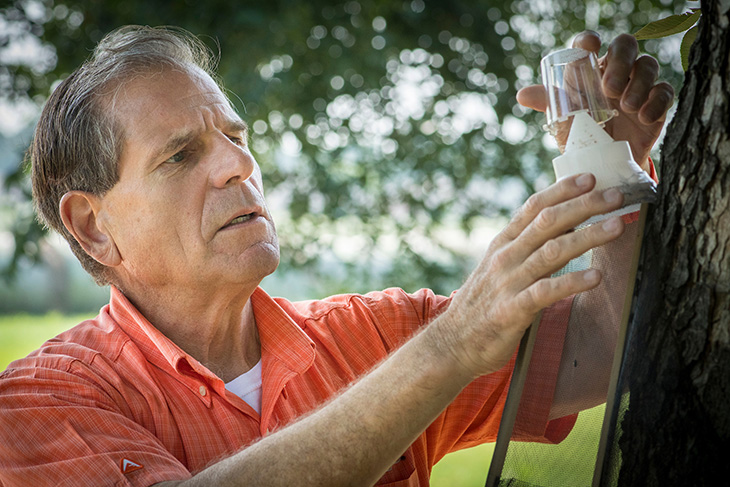
Be vigilant for pecan weevil emergence
Wednesday, September 2, 2020
With recent rains driving nut development, pecan growers should be watching their orchards for signs of pecan weevil activity. Where they look, however, is a matter of seasonal timing.
Pecan weevils cause two primary types of damage, depending on the stage of fruit development when the pests are active, said Phil Mulder, head of Oklahoma State University’s Department of Entomology and Plant Pathology.
“Nuts that are punctured and drop off the tree indicate weevils have fed on the kernel in the water stage of development,” he said, referring to a stage at which the shell and kernel seed coat have reached their full size. “The amount of this type of damage depends on weevil population density, time of emergence and longevity of the weevils.”
Research has shown that individual weevils destroy an average of about one pecan every four days. When shells harden later in the season, weevils enter the nut to lay eggs. Pecan shucks may adhere to the shell past normal harvest time when that happens.
Additional damage is caused by the larvae as they feed on the kernel for several weeks. Such mature nuts typically do not drop from the tree while the larvae grow. Two to four larvae within each infested nut can easily destroy the entire kernel.
“A female weevil can produce 30-54 eggs, so several nuts can be affected from each egg hatch,” Mulder said. “Egg-laying begins when nuts reach the dough stage – typically late August to early September – so early maturing pecan varieties are the most susceptible.”
OSU Extension recommendations are for orchards with a history of pecan weevil problems to be monitored even more carefully than usual. Insecticides should be applied as close to the peak emergence period as possible. Record-keeping matters.
“Developing an orchard history as to weevil occurrence can help anticipate emergence and treatment times,” Mulder said. “Growers who have not done so in the past should start doing so this year. It really does help make management easier.”
Circle traps are useful for weevil monitoring, providing good indications of weevil presence and abundance within an orchard.
For more information on pecan weevil control and other research-based orchard management practices, consult OSU Extension fact sheets, available online and through all county Extension offices.
OSU Extension is one of two state agencies administered by the university’s Division of Agricultural Sciences and Natural Resources and is a key part of OSU’s state and federally mandated teaching, research and Extension land-grant mission.
MEDIA CONTACT: Donald Stotts | Agricultural Communications Services | 405-744-4079 | donald.stotts@okstate.edu
